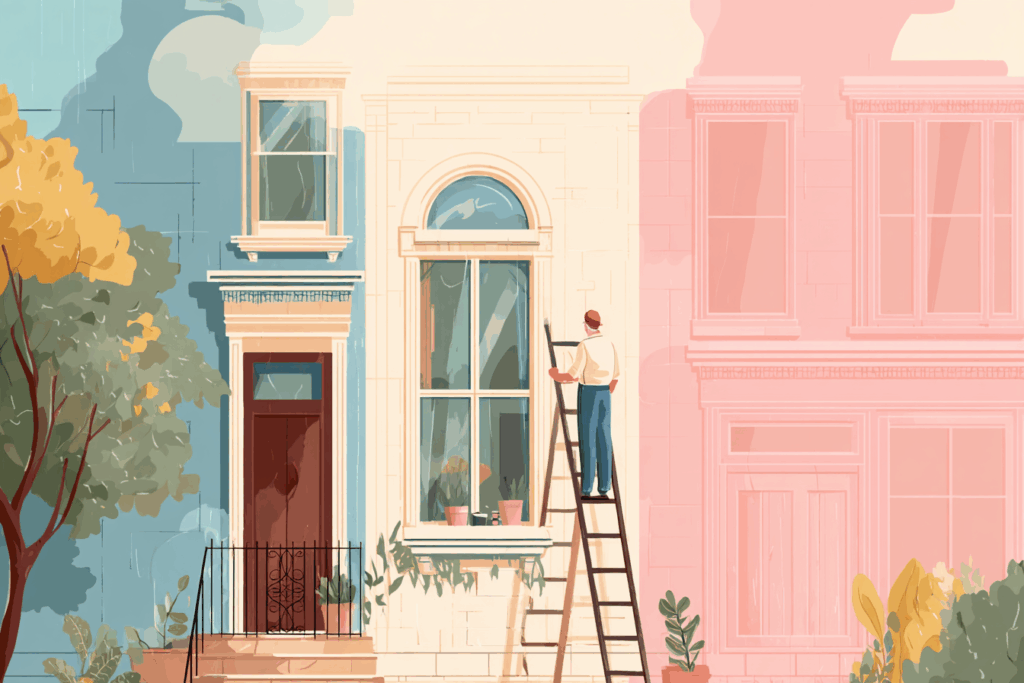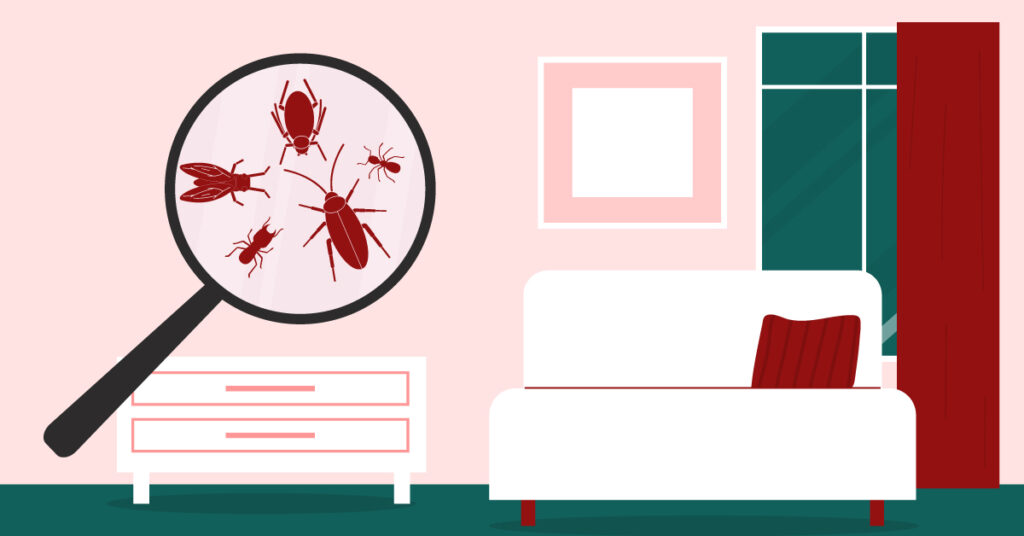Keeping your home comfortable and energy-efficient often comes down to the condition of your windows. Over time, even the best windows wear out.
Keep reading as we share more details about how to tell when it’s time for new windows and walk through the following steps. Let’s dive in!
Common Signs Your Windows Need Replacement
Are your windows past their prime? Here are seven telltale signs homeowners should look out for:
Drafts or Cold Spots
If you feel a chilly draft near closed windows or notice your curtains moving when the window is shut, that’s a red flag. Drafty windows indicate worn seals or gaps, which hurt energy efficiency and drive up utility bills. In fact, the U.S. Department of Energy says that heat gain and loss through windows accounts for 25%–30% of home heating and cooling use, so those little leaks add up.
Rising Energy Bills
An unexplained spike in heating or cooling costs can be due to failing windows. If your furnace or AC seems to be working overtime, your old windows might be letting conditioned air escape. Replacing leaky, single-pane, or poorly insulated windows with modern, ENERGY STAR® certified models can save about 7%–15% on annual energy bills. So, pay attention if your monthly bills keep climbing for no obvious reason.
Condensation Between Panes
Foggy windows that you can’t wipe off usually mean moisture is trapped between double-pane or triple-pane glass. This “fog” or condensation between panes is a sign that the window’s seal has failed. Once a seal is broken, the insulating gas escapes and your window loses efficiency. In some cases, you can just replace the glass unit, but lingering fog is often a sign that a full window replacement could be needed down the road.
Visible Damage or Decay
Take a close look at your window frames and sashes. Do you see cracked or warped frames, soft or rotting wood, or peeling paint? These are signs of deterioration. Rotting wooden frames, rusted aluminum, or cracked vinyl not only look bad but also compromise the window’s structure. Broken glass, even small cracks, is another obvious sign – not just for aesthetics, but also for safety and insulation.
Difficulty Opening, Closing, or Locking
Windows should open and shut smoothly. If you struggle to pry a window open or have to prop it up, that’s a problem. Wood frames can swell, components can break, or the foundation can shift over time, making the operation stiff. Besides being annoying, stuck windows can be a safety hazard in an emergency (and warped frames might not lock properly, posing a security risk). A well-functioning window glides open and locks securely – if yours doesn’t, it may be time for a replacement.
Excess Outside Noise
Do you hear cars honking or your neighbor’s lawn mower loud and clear as if your windows were open? Older or single-pane windows are often poor at blocking sound. If every outside noise permeates your home, upgrading to modern double- or triple-pane insulated windows can greatly reduce noise infiltration. Quieter windows will make your home more peaceful.
Outdated Style or Curb Appeal
This is more cosmetic, but if your windows are stuck in the 1970s in terms of style, new windows could boost your home’s appearance. Trends and technology in windows have improved. Replacing old, faded windows can modernize your home’s look and even increase its value if you plan to sell. Of course, style alone isn’t a reason to replace windows, but combined with functional issues, it can tip the scales.
If you’re noticing one or more of these signs, experts agree it likely means your windows are due for replacement. Ignoring the issues can lead to bigger problems, which we’ll cover next.
Why You Shouldn’t Ignore Window Problems

Replacing windows is a significant project, so it’s tempting to put it off. However, neglecting the warning signs above can have some serious downsides:
Higher Energy Costs & HVAC Strain
Drafty, inefficient windows let heated or cooled air leak out, making your HVAC system work overtime. You’ll feel this as spiking energy bills and a less comfortable home. Left alone, those gaps can cost you hundreds of extra dollars per year on utilities. Your furnace and AC will also have a shorter lifespan due to the extra load. In short, sealing or replacing leaky windows saves money in the long run by easing the burden on your energy bill and mechanical systems.
Water Damage and Mold
Windows are supposed to keep the weather out. If you have warped frames or failed seals, water can sneak in during rainstorms. Over time, moisture seeping in can rot wooden frames, damage drywall and flooring, and even promote the growth of toxic mold. You might not notice the leak until a nasty stain or soft spot appears around the window. By then, you could be looking at costly repairs to your walls or sill.
Mold and rot are not only expensive to fix, they’re also hazardous to your family’s health. It’s far better to address a leaky window early than to deal with structural repairs later.
Poor Comfort & Health
Drafts don’t just hit your wallet – they impact your comfort and well-being. Cold drafts in winter and hot spells in summer make it hard to keep indoor temperatures steady. You might find yourself avoiding certain rooms that are too chilly or too stuffy. Plus, those gaps can let in dust, pollen, and outdoor pollutants, which can affect your indoor air quality.
If you’ve noticed worse allergy symptoms at home, your leaky windows could be a culprit. And if condensation is consistently forming, mold spores could be in the air. Your home should be a healthy refuge from outside elements, and fixing window problems helps ensure it is.
Security and Safety Risks
Windows that don’t lock properly or are painted shut pose risks. A window that won’t open easily could trap you in an emergency, like a fire. On the flip side, a window that won’t close or lock well is practically an invitation to intruders. Old single-pane glass can also shatter more easily. Modern replacement windows often come with improved safety features (stronger glass, better locks). Upgrading can keep your home safer from break-ins and accidents, whereas ignoring faulty old windows can leave it vulnerable.
Lower Home Value & Curb Appeal
From a homeowner’s perspective, failing windows can detract from your biggest investment – your home. Prospective buyers do notice the condition of windows when evaluating a house. Drafty, foggy, or visibly deteriorating windows can reduce your home’s value because buyers see future expense and hassle.
Even if you’re not selling now, consider that maintaining windows protects your property’s value. And in the meantime, new windows will simply look nicer. They can enhance your home’s curb appeal and give you pride in your home’s appearance, whereas ugly, outdated windows do the opposite.
The bottom line is that windows aren’t just passive panes of glass – they play a key role in your home’s efficiency, comfort, and integrity. If you address the issues promptly, you can prevent small annoyances from becoming big, costly headaches.
What to Do Next: A Step-by-Step Guide for Homeowners
Alright, you’ve identified some window problems and decided it’s time to take action. Replacing windows might feel overwhelming, but breaking it down into steps can make it manageable.
Here’s a practical game plan:
- Assess Your Windows’ Condition: Start by giving your home a thorough walkthrough. List which windows have problems and what the issues are (draft, fogging, rot, etc.). Take note of your windows’ age, too. Many homes have windows that last about 15 to 30 years before they deteriorate. If yours are in that age range (or older), even well-maintained windows may be nearing the end of their life.
- Set a Realistic Budget: Window projects can vary widely in cost, so it’s important to budget before you jump in. The price depends on the number of windows, the type of window, and the material. On average, replacing a window costs around $550 per window (materials only) and can range from a couple of thousand dollars for a few windows to over $10,000 for a whole house. Also, factor in installation labor – professional installation might add roughly $100–$300 per window in labor fees. In addition, look out for incentives and rebates: the federal government currently offers a 30% tax credit on the cost of installing ENERGY STAR-certified windows (up to $600). Many local utilities also have rebates for high-efficiency windows.
- Repair vs. Replace – Make the Call: Now it’s decision time: can you get by with repairs, or do you truly need full replacements? In some cases, a repair is perfectly sufficient (and much cheaper). For example, if you have a relatively new window with a single issue, such as a broken pane or a faulty lock, you can often just fix that component. Replacing just the glass (called reglazing) or weatherstripping might solve drafts without the cost of a whole new window. However, if your windows are old, very drafty, have multiple failing parts, or significant frame damage, replacement is usually the smarter long-term move.
- Choose Your Window Style and Materials: If you’ve decided to get new windows, the fun part is choosing the style and materials you want. There are two main aspects to consider: the window style/type and the frame material. First, think about style and functionality. Common types include double-hung windows (the classic up-and-down sashes), casement windows (crank-out style), sliding windows, picture windows, bays, bows, etc. The best style depends on your home’s design and your needs.
Next, choose the frame material: vinyl, wood, or fiberglass (or composites) are the most popular. Each has pros and cons:
- Vinyl windows are extremely popular due to their affordability and low maintenance. Vinyl won’t rot or need painting. Good-quality vinyl is a decent insulator and can last decades, though in very extreme temperatures it may expand slightly. The trade-off is that vinyl isn’t as strong or long-lasting as some other materials – expect a lifespan of roughly 20-30 years for a quality vinyl window.
- Wood windows have a classic beauty and excellent natural insulating properties. A well-made wood window is warm and charming and can be painted or stained to suit your taste. However, wood frames do require periodic upkeep—regular painting or sealing to prevent rot and insect damage. They also tend to cost more than vinyl.
- Fiberglass windows are the high-performance option. Fiberglass is a strong, durable material that resists warping, weather, and wear. It provides excellent insulation (even better than vinyl) and can handle extreme temperatures with minimal expansion. Fiberglass windows can easily last 30-50 years. The frames can also be painted, giving you more design flexibility. The main downside is cost – fiberglass windows are typically more expensive up front than vinyl or wood.
- Other options: Aluminum frames (very strong but not as energy-efficient and prone to condensation) and composite materials that blend wood and vinyl. For most homeowners, the big three—vinyl, wood, and fiberglass—will be the focus. Consider what matters most to you: initial cost, look, maintenance, or long-term performance. It’s often about finding the right balance for your situation.
- Don’t forget the glass and hardware options, too: Today’s windows come with features like low-E coatings (to reflect heat and UV rays), double- or triple-glazing, and argon gas fills between panes – all of which improve energy efficiency. If you live in a very cold or hot climate, or on a noisy street, investing in triple-pane glass or laminated acoustic glass can make a big difference in comfort.
Also, think about styles of grids (mullions), colors, and hardware finishes that match your home. It can be a bit overwhelming, but many manufacturers offer online design tools to visualize styles. Importantly, look for the ENERGY STAR label when shopping and check the NFRC ratings on the window’s sticker – this will tell you how the window performs in terms of insulation (U-factor) and solar heat gain.
- Find Reputable Installers and Get Quotes: The performance of a new window depends heavily on proper installation, so you’ll want a qualified pro to do the job. Start by researching local window replacement contractors. Ask friends or neighbors for recommendations (word of mouth is gold). You can also read online reviews on platforms like Angi (Angie’s List), Yelp, or the Better Business Bureau (BBB) to see which companies have a good reputation in your area. Aim to contact at least 2-3 different companies to request quotes – most will provide a free in-home or virtual consultation and estimate.
Final Thoughts
Replacing your windows might feel like a big undertaking, but with the right approach, it’s absolutely manageable – and the results are worth it. New windows can make your home more comfortable, energy-efficient, and attractive, all while giving you peace of mind about leaks and drafts.
By recognizing the signs of window trouble early and following through with a solid plan, you’ll avoid the pitfalls of ignoring the problem. Whether you opt to repair a few trouble spots or do a full replacement with the latest ENERGY STAR models, you’re investing in your home’s future. Here’s to a cozier home and lower energy bills!
You might be interested in: Older Home Energy Efficiency: 7 Upgrades That Will Make a Difference




